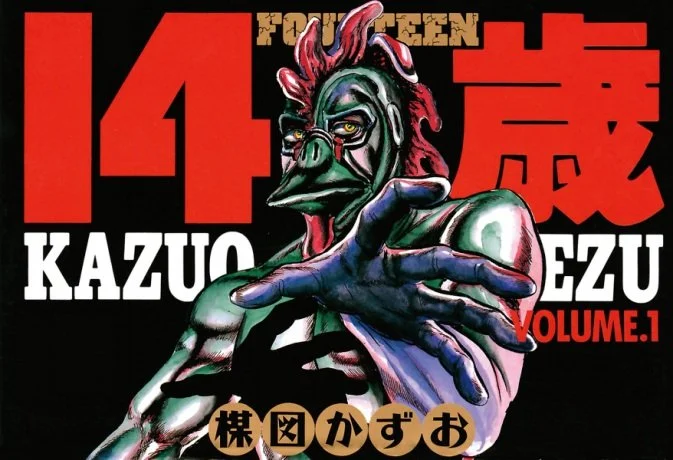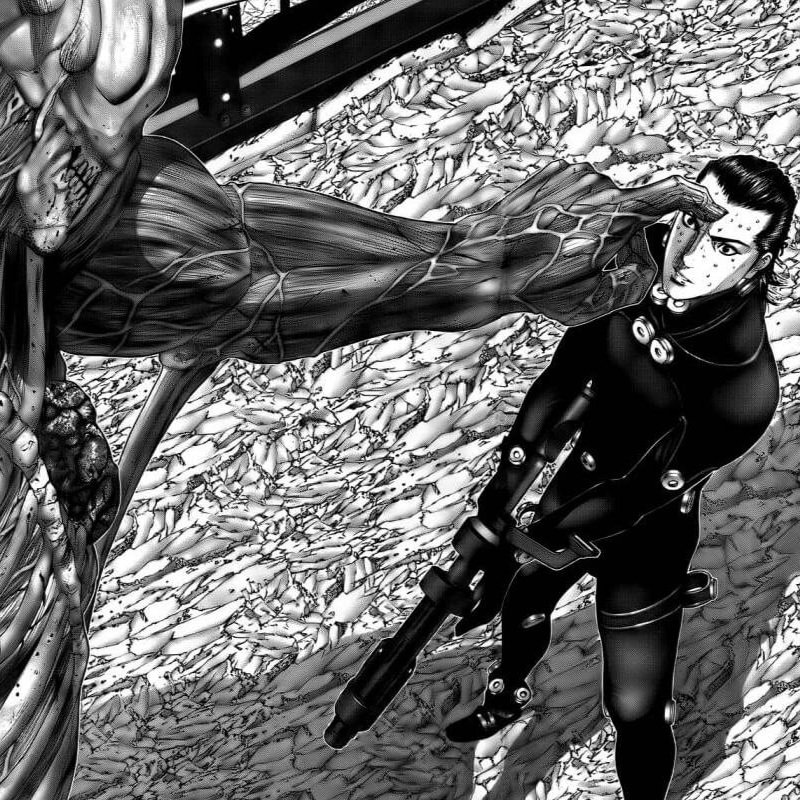KAZUO UMEZU - Unveiling the Eerie Elegance of the Animal Kingdom
When you hear Kazuo Umezu, you probably think of horror manga like “The Drifting Classroom”, “Orochi”, “Reptilia”. Kazuo Umezu stands as a luminary known for his haunting narratives and mastery of horror. Beneath the surface of his tales lies a hidden facet of his creative identity - his portrayal of the animal kingdom.
“Fourteen” cover
Animals have always played a big role in the horror genre. Take insects for example. These six-, eight- or infinite legged, exoskeleton-clad parasites of the natural world lend themselves to evoke fear, making them an attractive pick for creators seeking to instill a sense of unease and terror. What sets Umezu’s approach to animals apart, is the variety of ways he has incorporated the creatures into his work.
A brush with reality
In the science fiction horror manga “Fourteen” (14歳), Umezu employs a direct approach through enigmatic entities like Chicken George - a grotesque fusion of the mundane and the macabre, sporting a chicken's head atop a heteromorphic body. The combination of an ordinary chicken head atop a body that morphs into a human-like shape throughout the manga, creates discomfort at its finest.
Chicken George’s emotions of anger and lust for revenge blended with vulnerability, become a canvas of despair. These are emphasized by the human-like features on Chicken George’s head, like forward facing eyes.
Chicken George in “Fourteen”
Chicken George in “Fourteen”
Further along the narrative path of “Fourteen”, the mutant zoo comes into view. Here, Umezu's artistic brush combines mammalian bodies with spidery, hairy legs, resulting in a zoo that invites no desire for exploration.
Mutant animal zoo in “fourteen”
Mutant animal zoo in “fourteen”
Mutant animal zoo in “fourteen”
The realm of insects
In the manga “The Drifting Classroom” (漂流教室), which is an indirect spiritual prequel to “Fourteen”, Umezu features insects in a more direct manner. As our protagonist Sho ventures into unknown terrain, he and his group encounter an oversized killer centipede-like insect, with every intention to devour them.
Attacking insect in “The Drifting Classroom”
Attacking insect in “The Drifting Classroom”
As the story progresses, insect inspired creatures make their entrance, known as “The Future Humans”. They are a misanthropic hive mind of spider-like creatures that descended from humans. Here Umezu taps once again into the uncomfortable aesthetics of insects.
“The Future Humans” in “The Drifting Classroom”
Human transformations
Whether in the form of spiders, colossal rodents, or reptilian beings, Umezu delves deep into the realm of human-animal transformations. In the 1967 manga series "Cat Eyed Boy" (猫目小僧), our protagonist finds himself straddling the line between human and monster, hated by both worlds and condemned to a life in the shadows of the human world. Yet, wherever his path leads, he is shadowed by the supernatural, which takes the shape of, you guessed it, horrifying animal depictions.
Also read
Spider creature from “Cat Eyed Boy”
Rodent creature from “Cat Eyed Boy”
The art of human to animal transformation brings us to the cold-blooded creatures: reptiles. In the ultra violent horror manga “God’s left hand, Devil’s right hand” (神の左手 悪魔の右手), he slightly touches the topic with a basilisk inspired creature.
Basilisk creature from “God’s left hand, Devil’s right hand”
However, no work echoes the mangaka’s connection to reptilian entities and human metamorphoses better than the 1965 manga “Reptilia” (へび女). Umezu drew inspiration from Japanese folklore "The Legend of the Turtle Pond". The narrative of the folklore follows a woman's journey to the Okameike pond in Nara, where she undergoes a transformation into a snake.
“Reptilia” cover
Protagonist Yumiko is hunted by a woman who transforms into a snake-like being and usurps the mantle of her mother. While de concept came from the Japanese folklore, the storyline was inspired by the complexities of mother-daughter relationships where mothers go as far as to think of their daughters as their own possessions. No better way to translate that idea than by depicting a mother figure as an obsessive monstrous reptile.
Snake woman from “Reptilia”
Snake woman from “Reptilia”
Snake woman from “Reptilia”
In essence, the genius of Kazuo Umezu lies not only in his mastery of horror but also in his ability to infuse the animal kingdom with a profound, multifaceted resonance. Beyond being mere vessels of fear, the creatures he conjures become mirrors through which readers confront their own fears, desires, and anxieties – an uncanny dance between the familiar and the unfamiliar, where horror intertwines with artistic introspection.























Junji Ito redefines horror with his surreal and macabre manga.